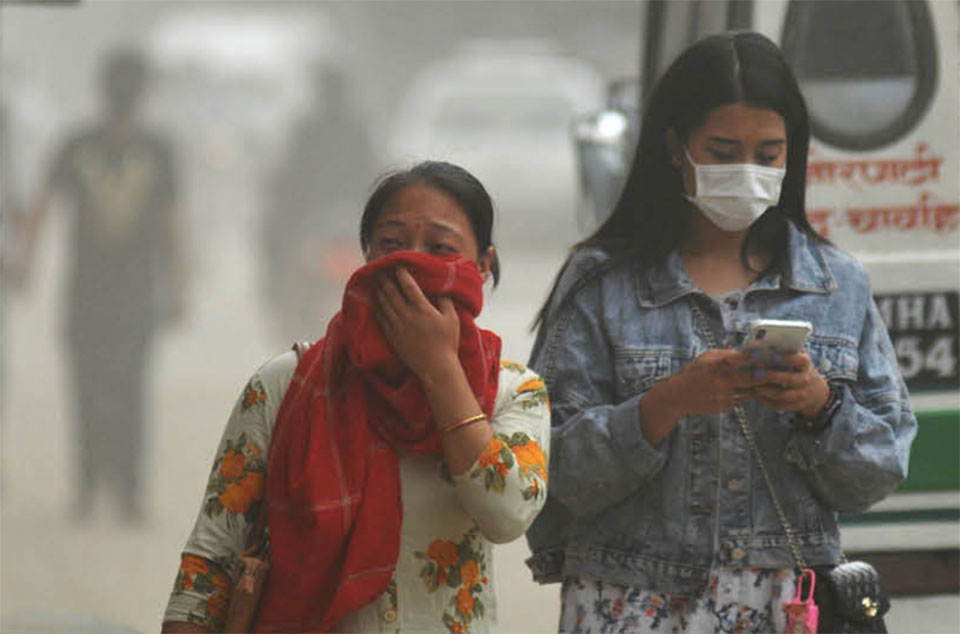
SATV April 6, Kathmandu: Environmental activists have urged the government to promptly take necessary measures with air pollution of the Kathmandu Valley reaching an alarming level.
The data shared by the Air Quality Index (AQI) showed that Kathmandu became the most polluted city last week with the air pollution reaching 348 AQI. According to the World Health Organization (WHO)’s air quality standards, air with an AQI of up to 50 is considered healthy. An AQI between 101 and 150 is considered 'unhealthy'. Similarly, an AQI between 201 and 300 is considered very unhealthy, and anything above that is categorized as hazardous, according to WHO guidelines.
Environment expert Bhusan Tuladhar underlined the urgency of declaring a health emergency along with massive public awareness because AQI has reached beyond 300 in the Kathmandu Valley. According to him, the present air quality of the Kathmandu Valley is posing a serious threat to the people’s health.
The experts have identified delayed rainfall, growing forest fires, dusty roads, construction works and burning of agricultural crop residues as the main causes behind the ongoing pollution in the country’s capital. Widespread wildfires, fuelled by an exceptionally dry winter and stagnant atmospheric conditions, have caused the thick and throat-burning smog to cover the Kathmandu valley, say experts.
Issuing a joint press statement on Saturday, a group of environmentalists associated with Avni Ventures, Prakriti Resource Center, Clean Energy Nepal and Nepal Forum of Environmental Journalists has urged the government to take the matter seriously and initiate some of the measures immediately. They have sought the government to declare an environmental emergency to safeguard the people who are at high risk due to the critical air pollution.
Increasing coordination among the local community and security agencies; prohibition of old vehicles, implementation of odd-even system in vehicular movement and banning burning of the agricultural crop residues are among the measures that the government is recommended to put into prompt action to address the grave environmental condition.
After the AQI crossed an alarming level, the Ministry of Health and Population a few days ago issued a notice urging people, mainly children, pregnant and individuals with chronic diseases, to adopt high precautions. The ministry has suggested special caution, alerting over the possibility of lung disease including asthma, eye problems, skin allergy, heart disease and other acute health risks.
The Department of Environment has warned that the high level of air pollution is likely to persist till mid-June and urged everyone to adopt utmost alertness. Gyanraj Subedi, director general of the department, said Nepal has been witnessing reduced winter rains for four years. Similarly, lack of adequate rains in the pre-monsoon period, increasing forest fires and dearth of environment-friendly infrastructures were aggravating air pollution, he added.
According to the government records, 253 cases of wildfires have been reported across the country as of March 2025 in the current fiscal year. As many as 45 districts have seen the cases of the forest fires.












